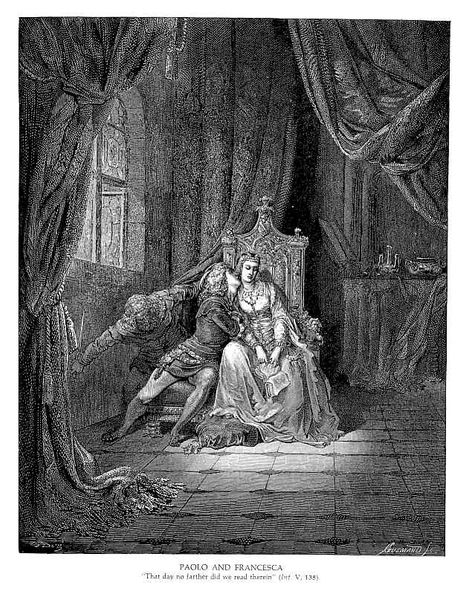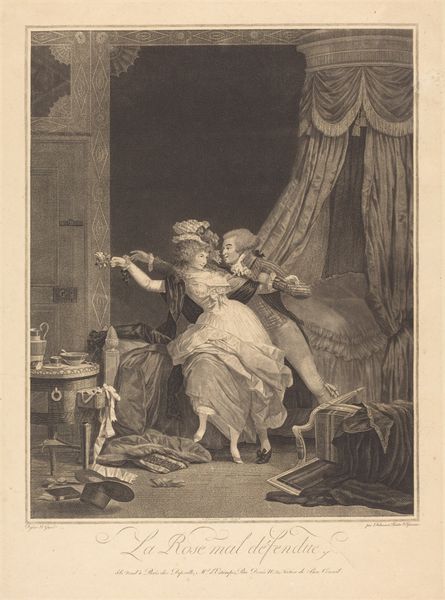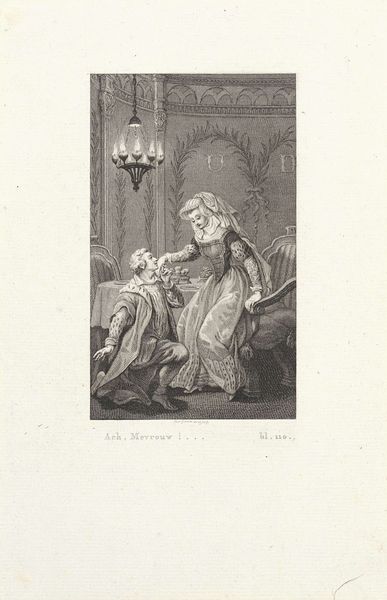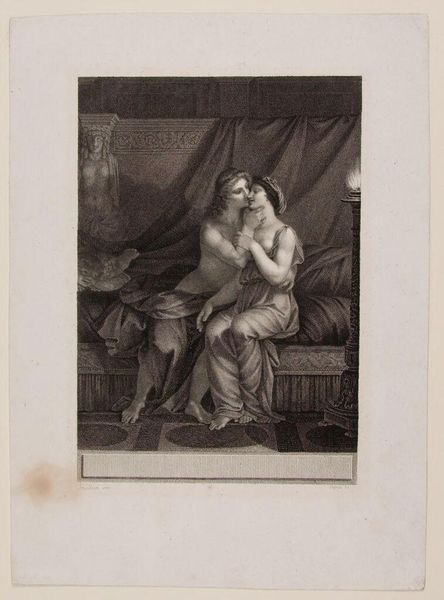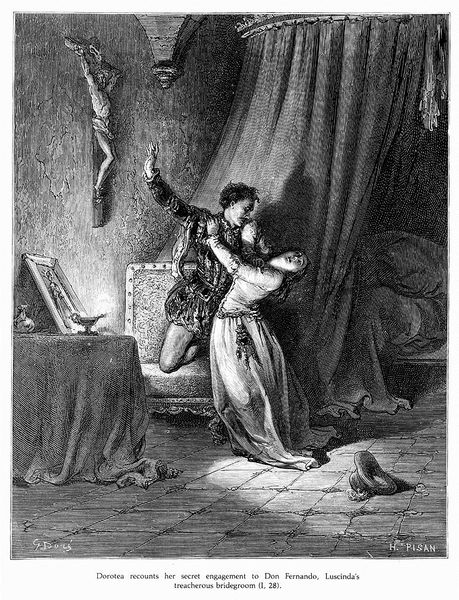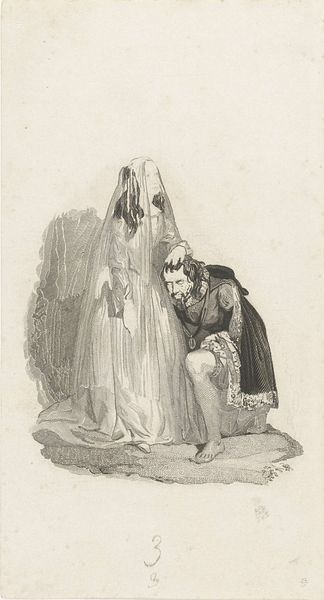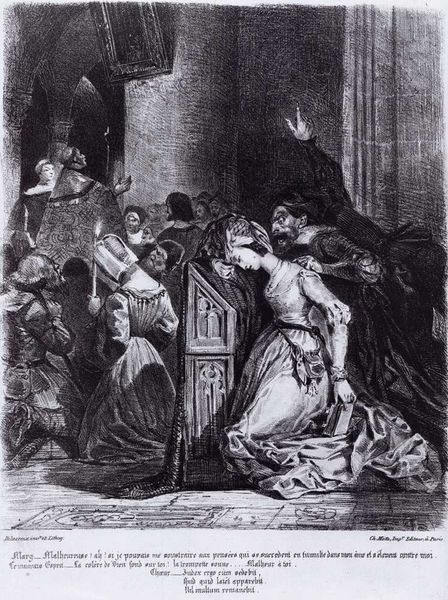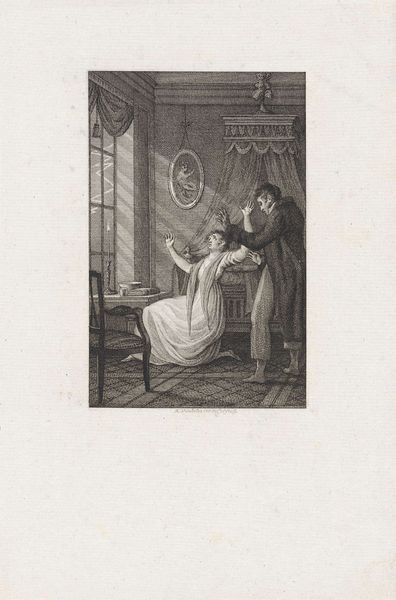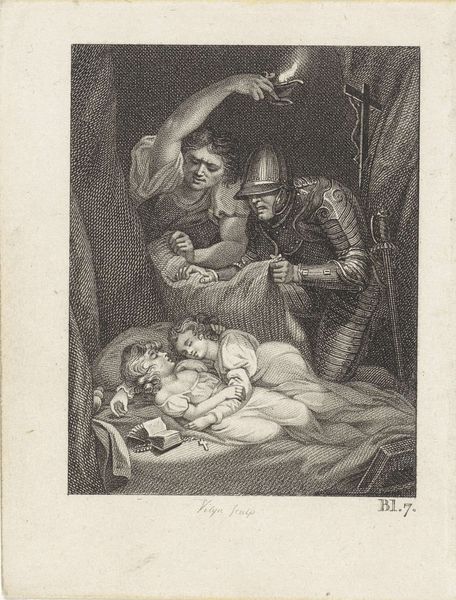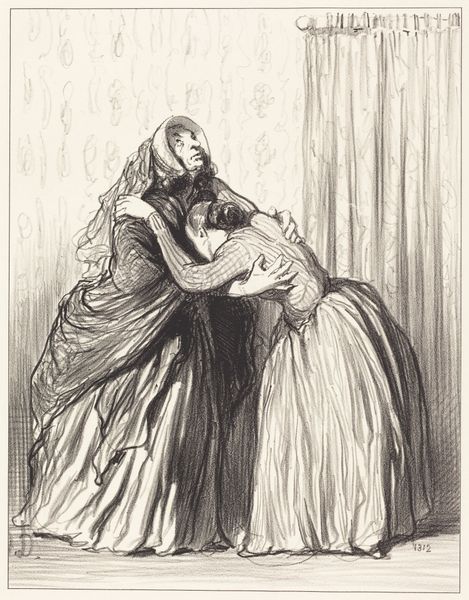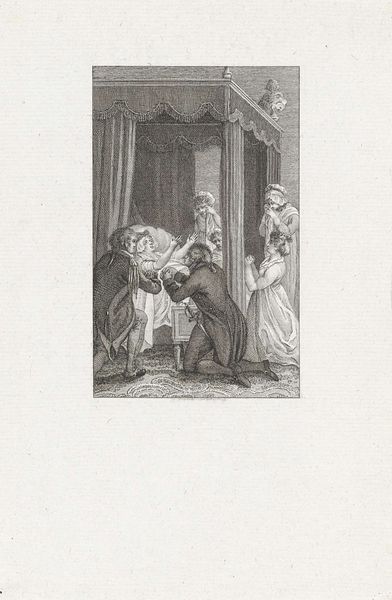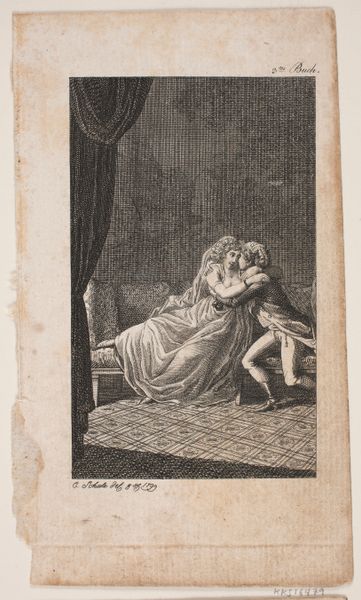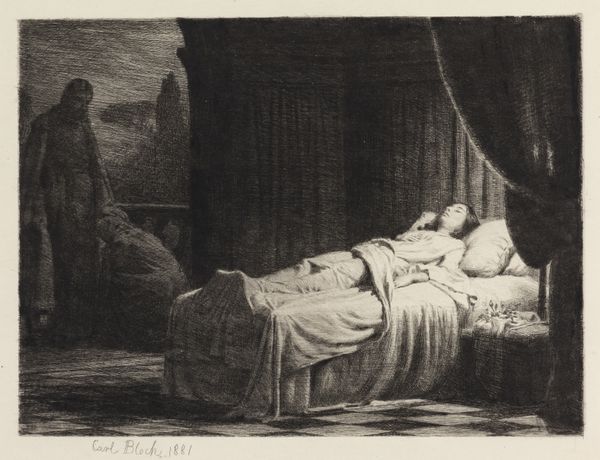
engraving
#
portrait
#
medieval
#
narrative-art
#
figuration
#
costume
#
romanticism
#
line
#
haunting
#
history-painting
#
engraving
Copyright: Public domain
Editor: We’re looking at Gustave Doré’s engraving, *The Inferno, Canto 5*. It depicts two figures embraced, with strong diagonal lines adding drama. It's heavy with shadow, making it feel secretive and tragic. What social commentaries or interpretations do you find particularly relevant in this work, especially when we think about how this image might challenge or reinforce certain social structures or ideologies? Curator: That's a perceptive observation. This work offers a window into how societal constraints, particularly those surrounding gender and morality, are explored through Dante's narrative. Note how the narrative emphasizes their transgression of societal norms, linking their love to eternal damnation. How might the power dynamics at play – a noblewoman and her supposed inferior – be interpreted through the lens of class and gender politics in 19th-century France, Doré's context? Editor: So, the figures aren’t just punished for love, but for disrupting the social order? Does this fit into Romanticism? Curator: Exactly. Romanticism was often used to either challenge or reinforce dominant ideologies. Dore creates empathy, yet the composition implicates them, reflecting conflicting attitudes. In Romanticism the concept of individualism comes in. The image presents ideas about how people felt regarding their individuality in society, the punishment for breaking norms, and also the lack of agency given to these women based on what society decided women should do, which were very specific to class and societal standards. Editor: It's powerful to think of the work speaking to societal fears about disrupting class and gender roles. I'll definitely be taking those themes forward in my studies! Curator: I'm so glad this conversation has resonated with you!
Comments
No comments
Be the first to comment and join the conversation on the ultimate creative platform.
